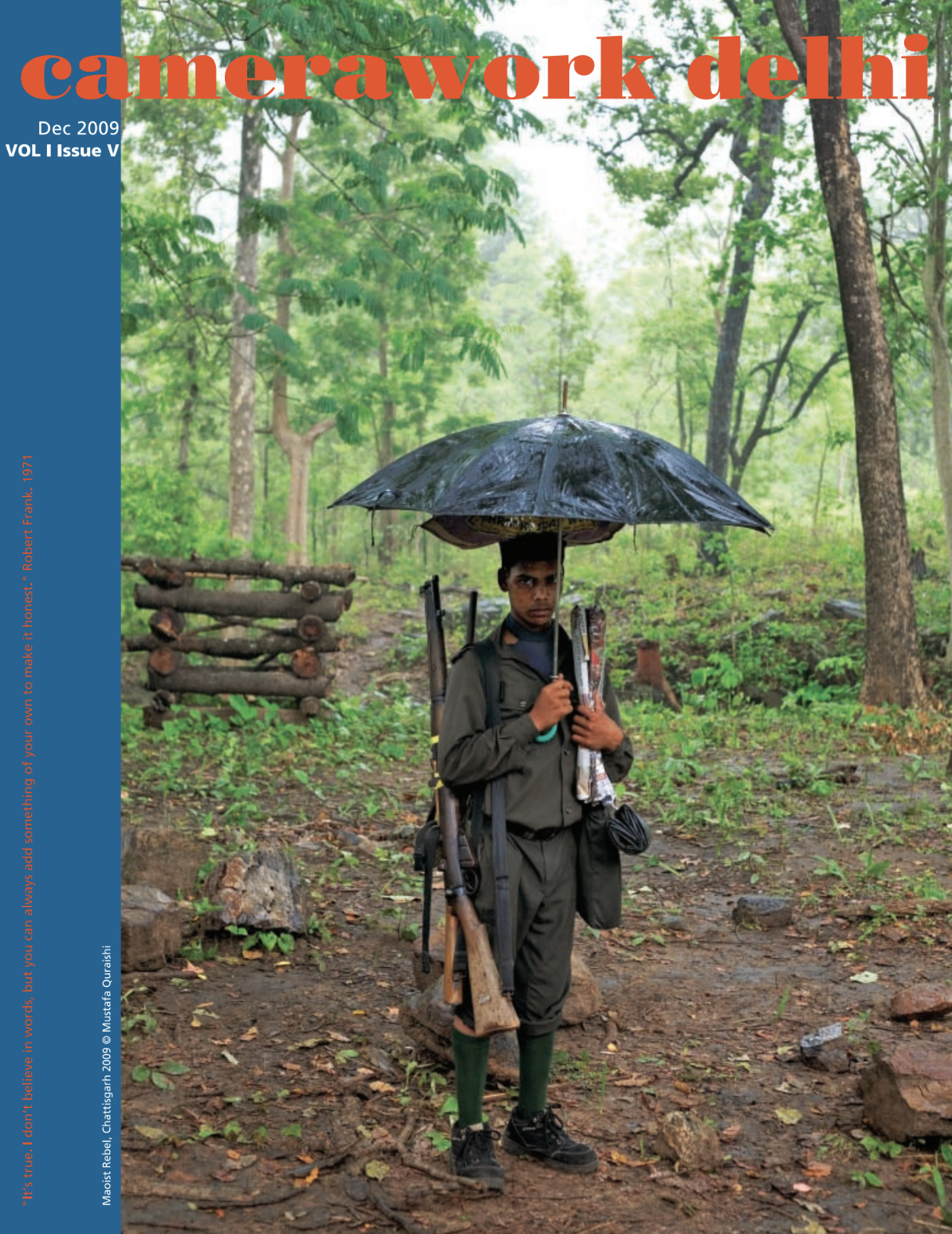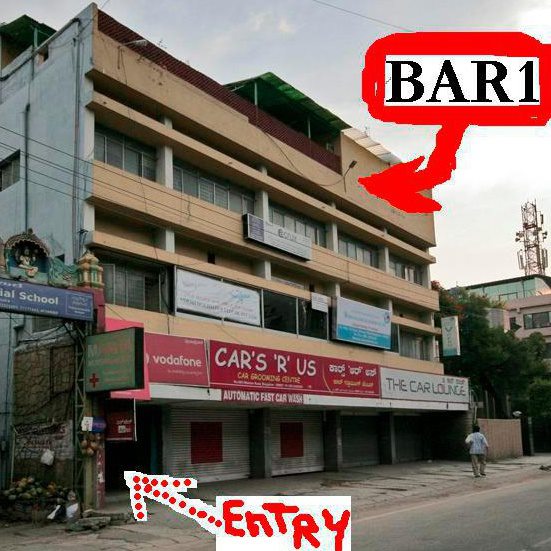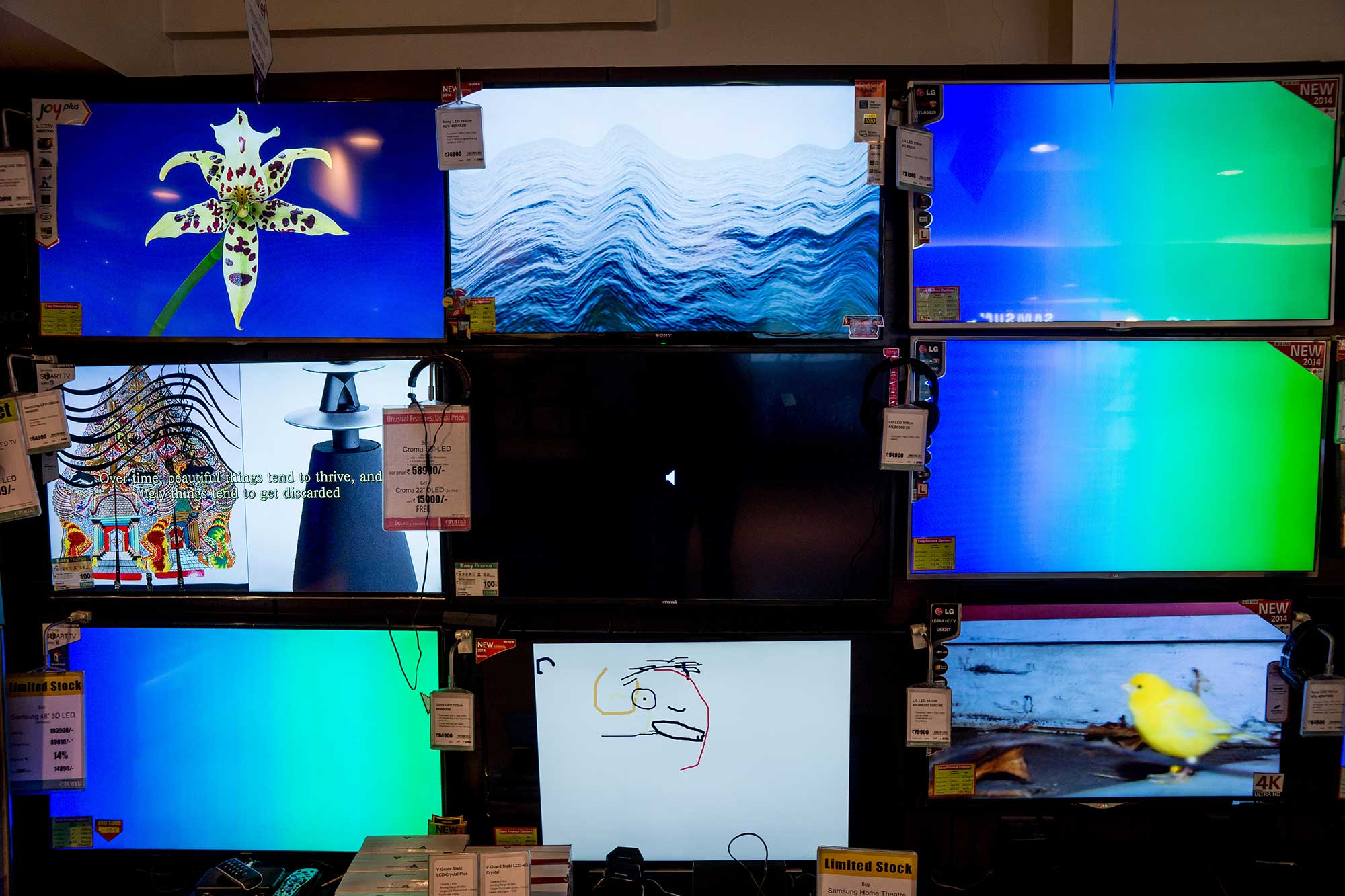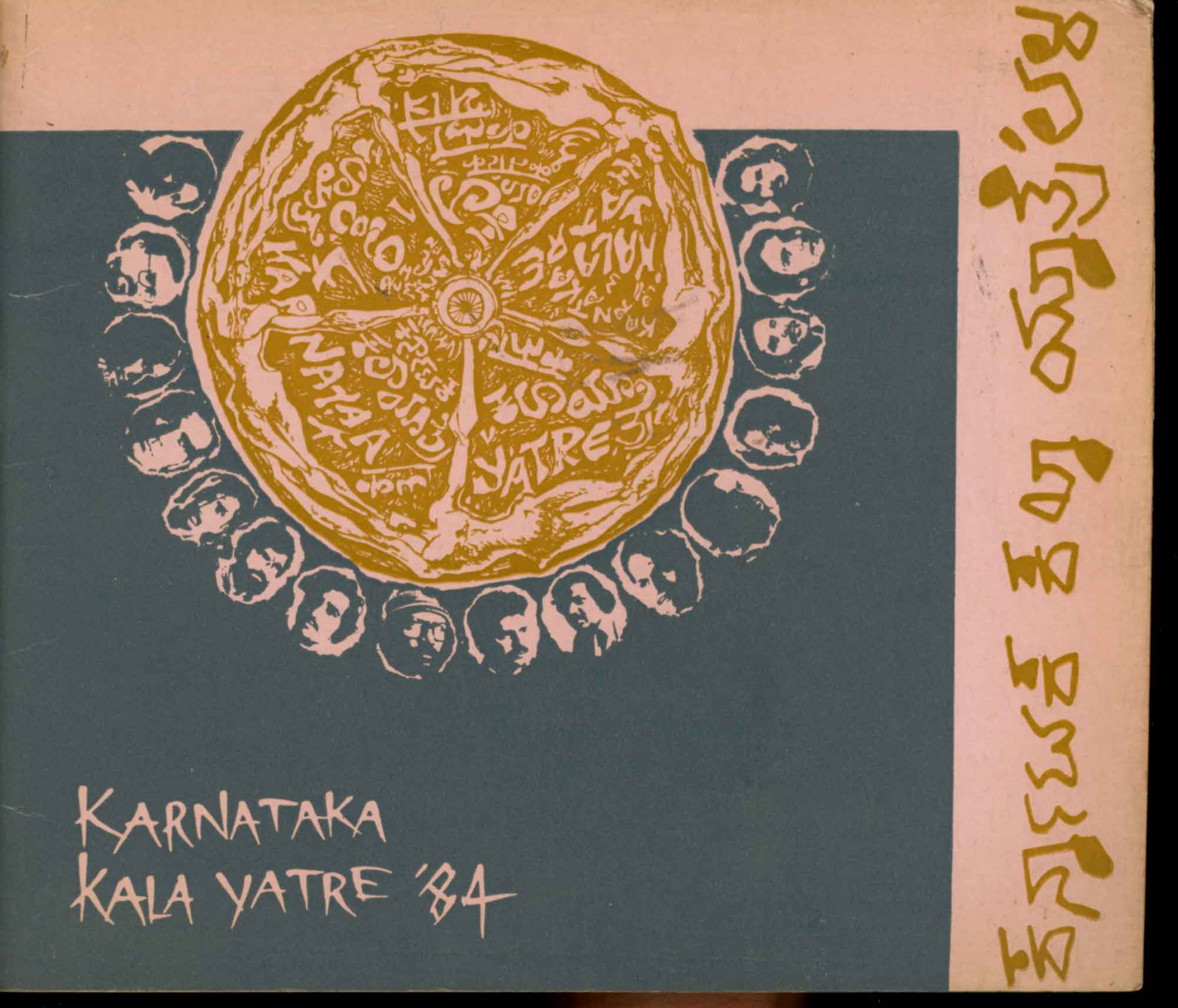Camerawork
Delhi, 2006–2011
Siddhi Bhandari
Camerawork Delhi, a photography magazine dedicated to contemporary practices, was in print from 2006 to 2011, edited by Gauri Gill, Sunil Gupta, and Radhika Singh. In her study, Siddhi Bhandari highlights the significance of this publication within its historical moment, drawing on archival material and interviews with the editors to examine its context and impact. She analyses the term camerawork as a network of people that forms around the technicalities of the camera and the practice of photography.
Siddhi Bhandari
Camerawork Delhi, a photography magazine dedicated to contemporary practices, was in print from 2006 to 2011, edited by Gauri Gill, Sunil Gupta, and Radhika Singh. In her study, Siddhi Bhandari highlights the significance of this publication within its historical moment, drawing on archival material and interviews with the editors to examine its context and impact. She analyses the term camerawork as a network of people that forms around the technicalities of the camera and the practice of photography.
Artist-led Publication And Reading
Platforms In India
Allan Parker
Allan Parker writes about independent publication houses and publishing practices in the arts in India. The essay highlights works of Reliable Copy by Nihaal Faizal and Sarasija Subramanian, Editions JOJO by Kaamna Patel, Kānike Studio by Vivek Muthuramalingam, Indu Antony and Krishanu Chatterjee, Offset Projects by Anshika Varma and Atelier Prati by Jayasimha Chandrashekhar and S Basavachar. The essay situates the book as a cultural and artistic object examining its place within the frameworks of economics, creative practice, and materialities of independent initiatives by artists.
Allan Parker
Allan Parker writes about independent publication houses and publishing practices in the arts in India. The essay highlights works of Reliable Copy by Nihaal Faizal and Sarasija Subramanian, Editions JOJO by Kaamna Patel, Kānike Studio by Vivek Muthuramalingam, Indu Antony and Krishanu Chatterjee, Offset Projects by Anshika Varma and Atelier Prati by Jayasimha Chandrashekhar and S Basavachar. The essay situates the book as a cultural and artistic object examining its place within the frameworks of economics, creative practice, and materialities of independent initiatives by artists.
An Eye for the In-Between Spaces
Joshua Muyiwa
Joshua Muyiwa looks at the unique landscape of independent art initiatives in Bangalore that have now come to define the city. Tracing this history from the late 90s, he traces how models to share art, ideas, skills, and works—driven by a certain entrepreneurial spirit—have forged paths for other ways of being in the arts. The essay dwells on questions around curatorial visions, sustainability, and the resources of such initiatives along with their artistic practice.
Joshua Muyiwa
Joshua Muyiwa looks at the unique landscape of independent art initiatives in Bangalore that have now come to define the city. Tracing this history from the late 90s, he traces how models to share art, ideas, skills, and works—driven by a certain entrepreneurial spirit—have forged paths for other ways of being in the arts. The essay dwells on questions around curatorial visions, sustainability, and the resources of such initiatives along with their artistic practice.
Sides and
Accompaniments: The Pagal
Canvas Backyard
Stuti Bhavsar
Stuti Bhavsar explores the themes of the institution and the alternate; the artist and the cultural worker; and art and commerce—not confined to their binaristic underpinnings, but as sites of relationalities, which though often uncomfortable, are central to the workings of the art world. Keeping Pagal Canvas Backyard, an independent print- and service-based initiative in Bangalore, as the focus, the essay hints at spaces of negotiations in the arts.
Stuti Bhavsar
Stuti Bhavsar explores the themes of the institution and the alternate; the artist and the cultural worker; and art and commerce—not confined to their binaristic underpinnings, but as sites of relationalities, which though often uncomfortable, are central to the workings of the art world. Keeping Pagal Canvas Backyard, an independent print- and service-based initiative in Bangalore, as the focus, the essay hints at spaces of negotiations in the arts.
Beyond the Social Turn: The Dialogue Interactive Artists Association (DIAA)
Arushi Vats
Beyond the Social Turn, considers the frameworks of practice developed by the Dialogu Interactive Artists Association (DIAA), based in Bastar, India as provocations for contending with dominant notions of collaborative, socially-engaged or artist-led group initiatives. Focusing on select projects such as Nalpar, Pilla Gudis and Samvad, the essay dwells on radical possibilitie for agency in artmaking and its revisionist implications for methodologies of art criticism and discursive exchange.
Arushi Vats
Beyond the Social Turn, considers the frameworks of practice developed by the Dialogu Interactive Artists Association (DIAA), based in Bastar, India as provocations for contending with dominant notions of collaborative, socially-engaged or artist-led group initiatives. Focusing on select projects such as Nalpar, Pilla Gudis and Samvad, the essay dwells on radical possibilitie for agency in artmaking and its revisionist implications for methodologies of art criticism and discursive exchange.
Models for a Suburban Art Scene—Yelahanka’s Transient Art Spaces
Anisha Baid
Anisha Baid, writing about the arts scene in Yelahanka, a suburb of Bangalore, contemplates the burgeoning arts initiatives in the area. Notably, a significant proportion of these initiatives are spearheaded by students living in the area and remain transient, tied to the duration of their academic pursuits. Anisha delves into the intricate interplay between a suburb nestled within a metropolitan city, the influx of art students therein, and the realm of arts education as the setting for one of the most experimental DIY art spaces in the country.
Anisha Baid
Anisha Baid, writing about the arts scene in Yelahanka, a suburb of Bangalore, contemplates the burgeoning arts initiatives in the area. Notably, a significant proportion of these initiatives are spearheaded by students living in the area and remain transient, tied to the duration of their academic pursuits. Anisha delves into the intricate interplay between a suburb nestled within a metropolitan city, the influx of art students therein, and the realm of arts education as the setting for one of the most experimental DIY art spaces in the country.
Placemaking without Borders (Part 1):
Framing the Artistic Exchange between Bangalore and Aarau amid India’s Post-liberalization Internationalism
Shramona Maiti
In 1997, an artist residency exchange began between Bangalore, India and Aarau, Switzerland. In this two-part essay, Shramona Maiti explores the dynamics of art and cultural exchange using the Bangalore–Aarau exchange as a case study, shedding light on the influence of internationalism and artist-led initiatives in post-1990s India. She interviewed artists associated with this exchange and also gathered archival materials to weave this narrative of independent initiatives in India post liberalization and just before the art boom hit the country.
Framing the Artistic Exchange between Bangalore and Aarau amid India’s Post-liberalization Internationalism
Shramona Maiti
In 1997, an artist residency exchange began between Bangalore, India and Aarau, Switzerland. In this two-part essay, Shramona Maiti explores the dynamics of art and cultural exchange using the Bangalore–Aarau exchange as a case study, shedding light on the influence of internationalism and artist-led initiatives in post-1990s India. She interviewed artists associated with this exchange and also gathered archival materials to weave this narrative of independent initiatives in India post liberalization and just before the art boom hit the country.
The Aarau–Bangalore Exchange (Part 2):
Dynamics of Self-Organization in the Making of Global Art Spaces
Shramona Maiti
In 1997, an artist residency exchange began between Bangalore, India and Aarau, Switzerland. In this two-part essay, Shramona Maiti explores the dynamics of art and cultural exchange using the Bangalore–Aarau exchange as a case study, shedding light on the influence of internationalism and artist-led initiatives in post-1990s India. She interviewed artists associated with this exchange and also gathered archival materials to weave this narrative of independent initiatives in India post liberalization and just before the art boom hit the country.
Maiti writes, “Together, the two articles highlight the significance of the Aarau–Bangalore artistic exchange within the critical history of global art, emphasizing how artist-led placemaking played a role in overcoming cultural barriers in the post-90s art world. It thus aims to offer insights into the complex interplay of ideologies, self-organization, and the making of a global art space.”
Dynamics of Self-Organization in the Making of Global Art Spaces
Shramona Maiti
In 1997, an artist residency exchange began between Bangalore, India and Aarau, Switzerland. In this two-part essay, Shramona Maiti explores the dynamics of art and cultural exchange using the Bangalore–Aarau exchange as a case study, shedding light on the influence of internationalism and artist-led initiatives in post-1990s India. She interviewed artists associated with this exchange and also gathered archival materials to weave this narrative of independent initiatives in India post liberalization and just before the art boom hit the country.
Maiti writes, “Together, the two articles highlight the significance of the Aarau–Bangalore artistic exchange within the critical history of global art, emphasizing how artist-led placemaking played a role in overcoming cultural barriers in the post-90s art world. It thus aims to offer insights into the complex interplay of ideologies, self-organization, and the making of a global art space.”
Fortuitous Associations and Kin Networks
Marialaura Ghidini
Marialaura Ghidini, an Italian curator who has lived and worked in India for some years, writes about her curatorial work at the intersections of art, technology, and society, particularly with reference to her enduring connection with the city of Bangalore in this regard. Her essay describes the various collaborations that came about to envision some iconic projects such as The C(h)roma Show, #exstrange, Silicon Plateau, Curating on the Web, etc.
Marialaura Ghidini
Marialaura Ghidini, an Italian curator who has lived and worked in India for some years, writes about her curatorial work at the intersections of art, technology, and society, particularly with reference to her enduring connection with the city of Bangalore in this regard. Her essay describes the various collaborations that came about to envision some iconic projects such as The C(h)roma Show, #exstrange, Silicon Plateau, Curating on the Web, etc.
Tracing 50 Years of Jadavpur University Photographic Club
[1967 - 2017]
Sourav Sill
Sourav Sil’s long-term research on the Jadavpur University Photographic Club looks at the archive of the catalogs/souvenirs published by the club to trace its photographic interests, themes, practices, and use of technology over time. He considers the club’s photographic engagements and limitations within the social-cultural context of the university vis-à-vis the position of the club as an “independent” space operating within a formal institution.
[1967 - 2017]
Sourav Sill
Sourav Sil’s long-term research on the Jadavpur University Photographic Club looks at the archive of the catalogs/souvenirs published by the club to trace its photographic interests, themes, practices, and use of technology over time. He considers the club’s photographic engagements and limitations within the social-cultural context of the university vis-à-vis the position of the club as an “independent” space operating within a formal institution.
Karnataka Kalamela: Its Origins and Impact on the Art Scene in Karnataka
Ravi Kumar Kashi
Ravikumar Kashi gathers an extensive archive of the Karnataka Kalamela catalogs/souvenirs, Kala Mahotsava’s invites, and Kala Yatre catalogs and closely traces how the coming together of artists to create art festivals independently in Karnataka before the 1990s brought about significant changes in the art world. He attempts to trace the cultural-educational contexts of the art world as it was then and how this led to the building up of a collective energy within the Karnataka artist community to create and sustain spaces to showcase and talk about art.
Ravi Kumar Kashi
Ravikumar Kashi gathers an extensive archive of the Karnataka Kalamela catalogs/souvenirs, Kala Mahotsava’s invites, and Kala Yatre catalogs and closely traces how the coming together of artists to create art festivals independently in Karnataka before the 1990s brought about significant changes in the art world. He attempts to trace the cultural-educational contexts of the art world as it was then and how this led to the building up of a collective energy within the Karnataka artist community to create and sustain spaces to showcase and talk about art.
Made-to-Order Art on Main Street
Aileen Blaney
Aileen Blaney visits Pune’s Kholsa Galli framers to explore the world of art that fits all budgets. Looking away from the gallery-centric art world that mostly drives the art market, the essay explores customer-centric, made-to-order art on the street where every image from Van Gogh to gods printed or painted on different materials are up for grabs. This is an economy of access, and originality isn’t the currency.
Aileen Blaney visits Pune’s Kholsa Galli framers to explore the world of art that fits all budgets. Looking away from the gallery-centric art world that mostly drives the art market, the essay explores customer-centric, made-to-order art on the street where every image from Van Gogh to gods printed or painted on different materials are up for grabs. This is an economy of access, and originality isn’t the currency.
Conditions of Production: Looking at Independent Printmaking Studios in Baroda
Stuti Bhavsar
Stuti Bhavsar writes about the complex relationships between the multiple roles one takes on in the world of printmaking—that of the technician, the teacher, the artist, etc. Focusing on a few printmaking studios in Baroda, her essay focuses on the structures and impetuses that govern print studios, their economic models, and the porous relational interactions between space, material, and titles, which are not always in harmony.
Stuti Bhavsar
Stuti Bhavsar writes about the complex relationships between the multiple roles one takes on in the world of printmaking—that of the technician, the teacher, the artist, etc. Focusing on a few printmaking studios in Baroda, her essay focuses on the structures and impetuses that govern print studios, their economic models, and the porous relational interactions between space, material, and titles, which are not always in harmony.
1Footnote
Chinar Shah
Chinar Shah’s editorial reflects on ways of defining self-organizing in India through the use of common phrases such as independent, artist-led, DIY, DIT, alternative, and more.
She writes, “In this one year, I have read excellent critiques of many terms that are easily available to define self-organizing in the arts. I have read counterarguments and some more. I have spoken to countless artists and cultural workers in India to understand how they define their own work and practices. I find myself torn between nuanced vocabularies—part of me wants to hold on to them and part of me wants to just throw them in a garbage can.”
Chinar Shah
Chinar Shah’s editorial reflects on ways of defining self-organizing in India through the use of common phrases such as independent, artist-led, DIY, DIT, alternative, and more.
She writes, “In this one year, I have read excellent critiques of many terms that are easily available to define self-organizing in the arts. I have read counterarguments and some more. I have spoken to countless artists and cultural workers in India to understand how they define their own work and practices. I find myself torn between nuanced vocabularies—part of me wants to hold on to them and part of me wants to just throw them in a garbage can.”














